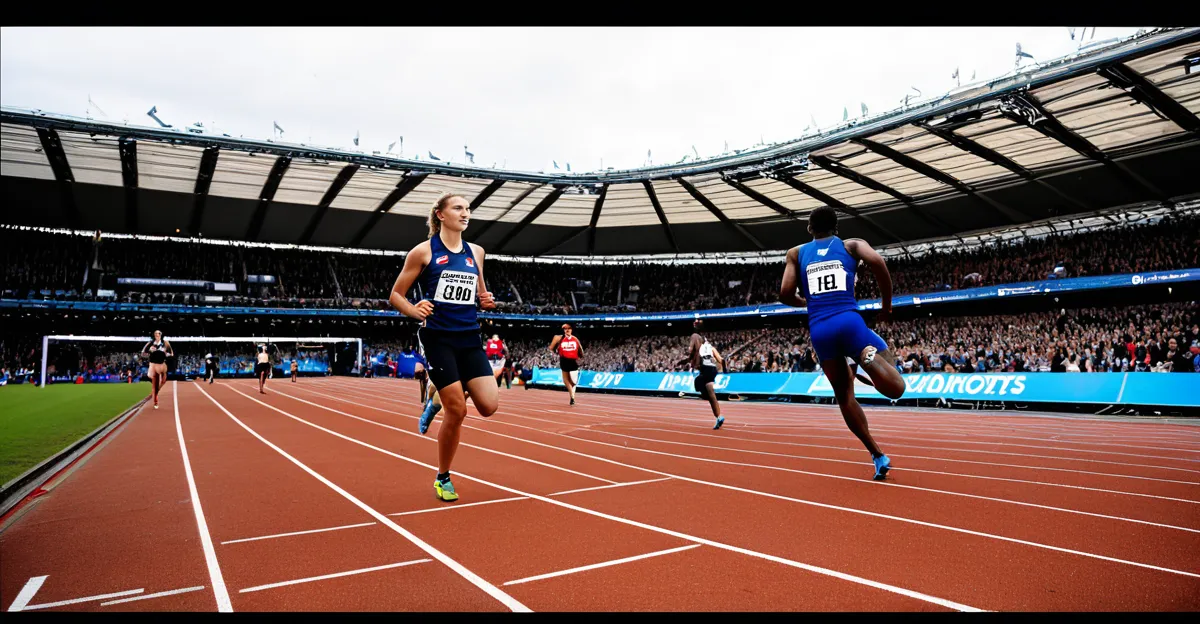Immediate Impact of Recent UK Sports Developments
Understanding how new policies and events shape the present landscape
Recent UK sports news highlights notable policy changes focused on enhancing athlete welfare and competitive fairness. These recent policy changes include updated regulations on funding allocations and stricter safety protocols during major competitions. The implementation of these policies aims to provide better support systems for athletes, directly influencing training environments.
Also read : What Are the Challenges Facing UK Athletes in Global Competitions?
Simultaneously, several major sports events occurred across the country, such as national athletics championships and high-profile football tournaments. These events brought media attention and increased public engagement, amplifying the urgency of adapting to new policies.
The immediate effects on athletes are visible in improved access to medical care and mental health resources, empowering them to perform under safer and more supportive conditions. Sports organizations, meanwhile, have restructured operational frameworks to comply with updated guidelines, impacting scheduling, resource distribution, and coaching approaches.
Have you seen this : What Steps Are Teams Taking to Adapt to Evolving Conditions in UK Sports?
Experts emphasize that these combined developments positively reshape competitive dynamics, though they note challenges remain regarding consistent policy enforcement. Stakeholders appreciate the swift response but call for ongoing evaluation to ensure policies meet evolving athlete needs.
This confluence of UK sports news affirms a proactive stance in UK sports, with visible short-term benefits for both athletes and organizations adapting to these recent developments.
Projected Influence on the Future of UK Athletics
Understanding the future of athletics in the UK requires examining evolving athlete pathways and talent development trends. Emerging models emphasize earlier identification of promising athletes coupled with tailored training programs to nurture potential from grassroots to elite levels. This approach evolves traditional pathways, offering clearer progression routes and reducing athlete attrition.
Insight from sports development trends suggests that funding will increasingly target innovation in training technology and holistic athlete support, including mental health and nutrition. These shifts aim to produce well-rounded competitors prepared for international success. Support structures are also anticipated to become more collaborative, involving partnerships between national governing bodies, local clubs, and educational institutions.
Data forecasts from sports governing organizations indicate a move toward decentralized training hubs, making high-quality coaching and facilities more accessible across the UK. This decentralization is expected to level the playing field, encouraging broader participation and talent discovery.
Overall, the future of athletics in the UK looks set to prioritize efficient athlete development pathways and adaptive support frameworks, ensuring the sustainability and competitiveness of UK athletes on the world stage.
Implications for Grassroots Participation
Exploring how current trends shape local sports engagement
Recent shifts in sports funding have significant implications for grassroots sports. Increased investment often targets infrastructure and coaching, which can boost local clubs’ capabilities. Enhanced facilities lead to more appealing environments for youth, thus encouraging higher community participation.
However, these developments also create barriers. Smaller clubs may struggle to meet new standards or compete for limited resources, potentially reducing access. Uneven funding distribution risks leaving disadvantaged areas behind, hindering inclusive participation.
Community organizations play a pivotal role in bridging gaps. They can navigate funding complexities, advocate for equitable support, and organize programs tailored to local needs. By fostering partnerships between stakeholders, these organizations empower more children and adults to engage meaningfully in grassroots sports.
In summary, while evolving policies and investments offer exciting opportunities, careful consideration is needed to ensure these benefits reach all levels. Supporting grassroots sports requires balancing enhanced resources with strategies to overcome new challenges and sustain community participation for diverse groups.
Economic and Social Impact of UK Sports Investments
Investing in sports infrastructure investment across the UK has shown significant benefits beyond just improving facilities. These investments contribute directly to the UK economy by creating jobs during construction and sustaining employment in ongoing operations. For example, stadium upgrades and new community sports centers generate opportunities in sectors such as construction, event management, and local retail, spurring regional economic development.
The wider social benefits of sports stem from increased community engagement and improved public health. Enhanced sports facilities encourage physical activity, which lowers healthcare costs by reducing the prevalence of lifestyle-related diseases. Furthermore, well-designed sports spaces foster community cohesion by creating environments where people from diverse backgrounds can connect, support teamwork, and build social networks.
Such investments also promote inclusivity by making sports more accessible to all demographic groups, thereby reducing social inequalities. This dual effect on both economic growth and societal well-being highlights the holistic value of prioritizing sports infrastructure investment within government agendas dedicated to development and health improvement.
By understanding these multifaceted benefits, stakeholders can better assess the importance of sustained funding in this sector as a driver of economic prosperity and stronger communities.
Challenges and Opportunities Ahead
The challenges in UK athletics are multifaceted, ranging from limited funding to inconsistent grassroots development. Many clubs struggle to maintain vibrant youth programs due to budget constraints, affecting the pipeline of future talent. Additionally, there can be infrastructural limitations that slow progress, such as outdated training facilities or insufficient access to sports science resources. These factors contribute to hurdles that require strategic planning to overcome for sustained success.
Despite these obstacles, there are considerable opportunities in UK sports to catalyse growth. Innovation in training technology, data analytics, and athlete wellness offers new paths to enhance performance. Securing partnerships with private enterprises and promoting wider community engagement can provide fresh funding streams and strengthen public interest. Moreover, expanding diversity and inclusion initiatives foster a broader talent pool and encourage participation from previously underrepresented groups.
Expert opinion highlights the importance of a balanced approach. Analysts stress that adapting to emerging technologies while maintaining foundational support systems is crucial. They recommend increased collaboration between governing bodies, coaches, and scientists to harness available tools effectively. By addressing current challenges with proactive strategies, UK athletics can position itself for a promising future that blends tradition with innovation.


